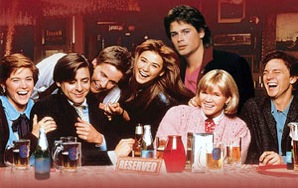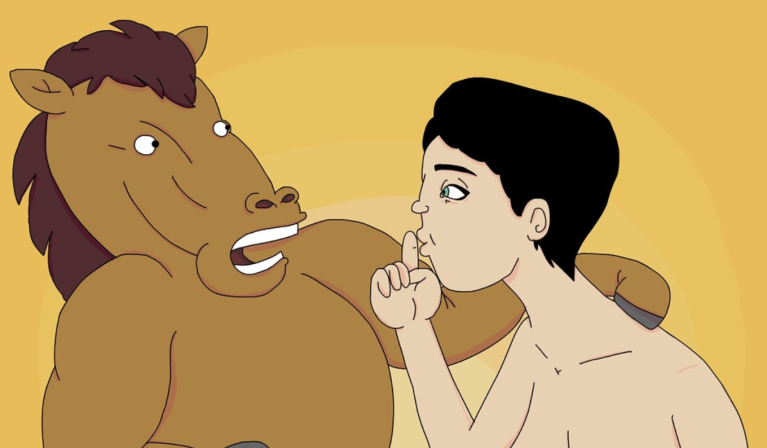
11 Totally Insane Scientific Theories People Used To Believe Were True
Back in the day, popular science put forth a great deal of things that we now know to be total poppycock. For instance, phrenology told you that you could read someone’s mind through the bumps in their skull, spontaneous generation argued that mice could pop right out of some old blankets and alchemy turned shit into gold. SOLID GOLD! From Tesla’s death ray to a hollow Earth, we’ve been through a lot of crap to get where we are now. Of the many unbelievable theories scientists have put forward over the years, here are 11 of the absolute weirdest.
1. There used to be another planet (besides Pluto).
Mercury has a notably peculiar orbit, which led 19th century scientists to posit that there was another planet between Mercury and Venus that caused the planet to behave this way. Led by the renowned mathematician, Urbain Jean Joseph Le Verrier, this school of belief led to widespread sightings of the non-existent planet all the way up until Le Verrier’s death in 1877, when he was still credited as the discoverer of his own planet. However, Einstein’s 1917 Theory of Relativity explained away the oddities of Mercury’s orbit, and there was no longer a scientific need for Vulcan. However, stargazers claimed sightings of the planet up until the 70s, when the planet’s memory drifted away. As a consolation, the non-existent mass did inspire the planet of the same name in Gene Roddenberry’s Star Trek, where it lives on forever in science fiction.
2. You can write on the moon in blood.
While uncovering a theory that changed mathematics, not every Theorem that came out of Pythagoras’ brilliant skull was genius. There were some duds in there, and by far the biggest was the mathematicians’ far-fetched hypothesis that you could write on the moon in blood using a simple system of mirrors. Pythagoras never fully detailed how one would go about this, but it involved writing a message on a mirror in blood and then flashing it at the moon. Considering that Pythagoras was legendarily eccentric — ordering his cult of followers to stay away from beans — I guess it’s not terribly surprising that he would come up with something this weird.
3. We are ice people.
Before we got to our relatively sane theories of existence today, we had to get through a lot of crazy shit. One of the weirder ones was Austrian engineer Hans Horbiger’s “Ice Theory,” which posited that ice was the building block of life, the universal substance that form to all of existence. Horbiger talked of ice planets, ice stars, ice moons and (theoretically) ice people. We are all made of ice. Despite how insane that sounds, Horbiger’s hypothesis found a great deal of backing, notably from Houston Stewart Chamberlain. Chamberlain was German composer Richard Wagner’s son-in-law and a major force in Germany’s Third Reich movement.
4. The sun is actually really cold — we swear.
In the 1700s, William Herschel’s innovations in telescope technology helped revolutionize the ways that we’re able to look into space — all from the privacy of our own homes. However, Herschel used his telescope to come up with some out-there ideas, like that the sun’s surface is cold and fully inhabitable, populated by aliens whose heads are acclimated to the enormous amount of sunshine. Herschel thought that an average human head would combust due to the sun’s rays, but these aliens had adapted to the bright atmosphere. Herschel thought that the sun was a planet and that all planets could naturally sustain life without the help of oxygen, water or stable conditions. If the sun looked dangerous and hot, he argued, that’s just because the planet’s clouds were confusing the human mind. His theories would be thrown out within 50 years.
5. The Bible predicts the future.
Sir Isaac Newton is best known as the twenty-something genius who concocted the theory of gravity after an encounter with a falling fruit. However, John Maynard Keynes (the economist) discovered another side of Newton when he set to write a biography of him — one that’s largely been forgotten about. Like something out of Dan Brown, Issac Newton believed that the Bible was hidden with clues about the destiny of humanity, including our expiration date. He spent the later part of his life trying to code break the text, and Keynes discovered an obsessive amount of notes on the subject, with Newton trying to find clues in the architecture of the Temple of Solomon. He even taught himself Hebrew to better solve these puzzles. His answer: The world will end in 2060.
6. Your sexual energy controls the forces of the universe.
You have more power than you thought you did, according to famed psychoanalyist William Reich, then one of the most prominent thinkers in the field of the human mind. However, despite his formative work on neuroses, Reich also thought that “orgone” was the life force of the universe. What is “orgone,” you might ask? Orgone is the sexual energy that all beings give off, whether humans or insects, and this energy is naturally blue. The will of the cosmos was controlled by orgoned, and Reich thought it caused phenomena like St. Elmo’s Fire — both the electrical charge and the 80s film, presumably. Despite its dwindling acceptance, Reich clung to this belief for years, even in the face of criticism from Einstein and later the FDA, after Reich claimed orgone could cure cancer.
7. Money doesn’t grow on trees — but lambs might.
You have to give it to the Greeks, who were truly ahead of their time in terms of scientific exploration, which is all about trial and error. However, one of their most epic errors was the then-held belief that you could grow your own lamb — right out of the ground, with a stem and all. You can go lamb picking! This theory mistakenly arose from accounts of cotton trees in the Indies, described as “trees on which wool grows.” This was grossly misinterpreted and passed down to mean that lambs are plant-life, and botanists were arguing about the nature of sheep all the way into the 17th century. A travel writer, Sir John Mandeville, once said on the subject: ““[In India] there grew there a wonderful tree which bore tiny lambs on the ends of its branches. These branches were so pliable that they bent down to allow the lambs to feed when they are hungry.”
8. A pregnant woman controls her baby’s thoughts.
When a woman is pregnant, her baby eats what she eats — which is why expectant mothers are encouraged to stay away from smoking, lest your baby become a fetal addict. However, classical gynecology also argued that a pregnant woman’s thoughts were being fed to her baby — which is super awkward if said woman is masturbating. It was thought that a mother had the ability to “impart special characteristics” on her baby through her pregnant thoughts, which was used to account for a number of infant diseases, defects or depression in youth. This theory helped scientists explain the Elephant Man’s severe birth defects, arguing that his mother’s mind was imprinted by an elephant during pregnancy.
9. California was an island.
They often say that, metaphorically, California is an island unto itself, but early North American geographers thought it actually was. Early 16th century cartographers drew the state as its own landmass separate from the mainland, and California remained this way in maps until the 18th century, when the 1774 expedition of Juan Bautista put that theory to bed. Until then, California had also been theorized in literature as the spot where Atlantis and/or the Garden of Eden rested.
10. You are made of bile and phlegm, you disgusting creature you.
While we were still figuring out the intricacies that made the body work (which we’re still working on), a number of hypotheses were put forward about what exactly went on in there. How does life happen? For scientists of classical antiquity, four “humours” maintained the function of the body: phlegm, yellow bile, black bile and blood. If a person’s body did not produce a healthy natural balance of these four substances, this led to malady, illness and death. Thus, bloodletting became a common panacea to cure ailments, in order to help the balance be restored. This theory hung around all the way up to the 19th century, when Rudolf Virchow’s work on viruses and bacteria helped us better grasp the complexities of cellular pathology.
11. Meet the fifth element: Phlogiston.
This one is so odd it’s hard to explain. In addition to the four elements we’ve all heard of (Earth, Water, Wind and Fire), there was another element called “Phlogiston,” the Pete Best of the group. In 1667, Johann Joachim Becher used the theory of this fifth element to explain burning. Becher argued that flammable materials contained Phlogiston, which caused them to catch fire and expel their Phlogiston into the air, leaving only remnants called “Calx,” later known as “Oxide.” When an object completely burned up, this conclusively proved that oxygen could only take in a set amount of Phlogiston. Becher also thought that the reason humans breathed wasn’t to release oxygen into the bloodstream but to expel Phlogiston from our bodies. Be gone with you, Phlogiston! ![]()











